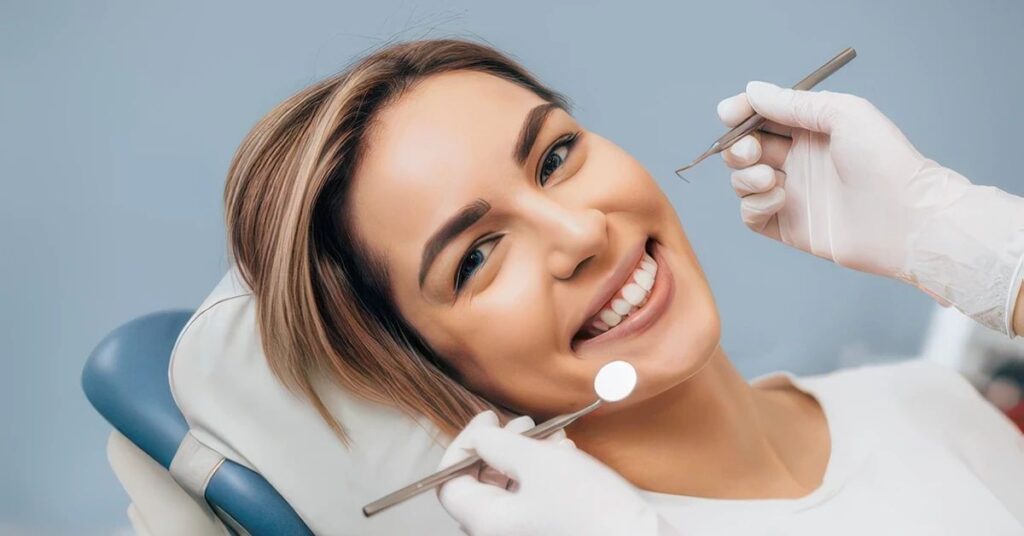Introduction: The Role of Restorative Dentistry
A healthy smile isn’t just about appearance—it’s about function, comfort, and overall oral health. Restorative dentistry plays a vital role in repairing damaged teeth, replacing missing ones, and restoring the ability to chew, speak, and smile confidently. Treatments like fillings, crowns, and bridges have become staples in modern dentistry, while advanced techniques such as implants and full-mouth restorations push the boundaries even further.
What Is Restorative Dentistry?
Restoring Function
Restorative dentistry focuses on repairing or replacing damaged teeth so that patients can eat and speak properly.
Improving Aesthetics
While primarily functional, many restorative procedures also improve appearance, giving patients renewed confidence in their smiles.
Dental Fillings: The First Line of Restoration
Types of Dental Fillings
- Composite (tooth-colored) fillings for natural aesthetics
- Amalgam fillings for durability
- Gold and ceramic fillings for strength and longevity
When Fillings Are Needed
Fillings are recommended when cavities or minor tooth damage occur, preventing further decay and preserving natural tooth structure.
Dental Crowns: Protecting and Strengthening Teeth
Materials Used for Crowns
Crowns may be made of porcelain, ceramic, metal, or a combination. They cover weakened teeth, restoring function and appearance.
When to Consider a Crown
Crowns are ideal for severely decayed teeth, after root canal treatments, or when a tooth is fractured. Patients often benefit from restorative dental crowns in Tustin to regain both strength and aesthetics in damaged teeth.
Dental Bridges: Closing the Gaps
Traditional Bridges
These use crowns on surrounding teeth to hold a false tooth in place, restoring chewing and aesthetics.
Implant-Supported Bridges
Anchored by implants, these provide a more stable and longer-lasting solution for missing teeth.
Beyond the Basics: Advanced Restorative Dentistry
Dental Implants
Implants replace missing teeth permanently, acting as artificial roots that support crowns or bridges.
Inlays and Onlays
These are custom restorations used when a filling isn’t enough but a full crown isn’t required.
Full-Mouth Restorations
A combination of treatments that rebuild the entire smile, addressing both function and appearance.
The Intersection of Restorative and Cosmetic Dentistry
Aesthetic Crowns and Veneers
Modern restorative dentistry often overlaps with cosmetic dentistry, ensuring that restorations not only function well but also look natural.
Orthodontics in Restorative Care
Orthodontic treatments like G dental Invisalign play a role in aligning teeth before or after restorative procedures, ensuring long-term stability and aesthetics.
The Process of Getting Restorative Dental Work
Diagnosis and Consultation
Dentists begin with exams, X-rays, and impressions to identify the problem and best treatment approach.
Treatment Planning
A personalized plan is created, often blending multiple treatments to restore full oral health.
Post-Treatment Care
Patients must maintain excellent oral hygiene and attend follow-ups to ensure long-lasting results.
Benefits of Restorative Dentistry
Restored Functionality
Patients can chew and speak comfortably again.
Improved Oral Health
Restorations prevent further damage and reduce risks of infection or tooth loss.
Enhanced Confidence
A healthy, beautiful smile boosts self-esteem and improves quality of life.
Who Needs Restorative Dentistry?
Anyone with cavities, broken teeth, missing teeth, or weakened dental structures can benefit from restorative treatments. It’s not just about aesthetics—it’s about long-term oral health and function.
FAQs
What is the difference between restorative and cosmetic dentistry?
Restorative dentistry focuses on function and health, while cosmetic dentistry emphasizes appearance.
How long do dental crowns last?
Crowns typically last 10–15 years with proper care.
Are dental bridges permanent?
They are long-lasting but may need replacement after 10–15 years.
Do fillings need to be replaced?
Yes, fillings can wear down and may need replacement over time.
Can restorative dentistry fix missing teeth?
Yes, with options like implants, bridges, and dentures.
Is restorative dentistry painful?
Most treatments are performed with local anesthesia, making the process comfortable.
Conclusion: Restoring Smiles, Restoring Confidence
Restorative dentistry is essential for maintaining oral health, functionality, and confidence. From simple fillings to advanced implants and bridges, today’s treatments ensure patients can smile, chew, and speak without discomfort. By blending functionality with aesthetics, restorative dentistry truly transforms lives—helping patients regain not just their smiles, but also their confidence.


